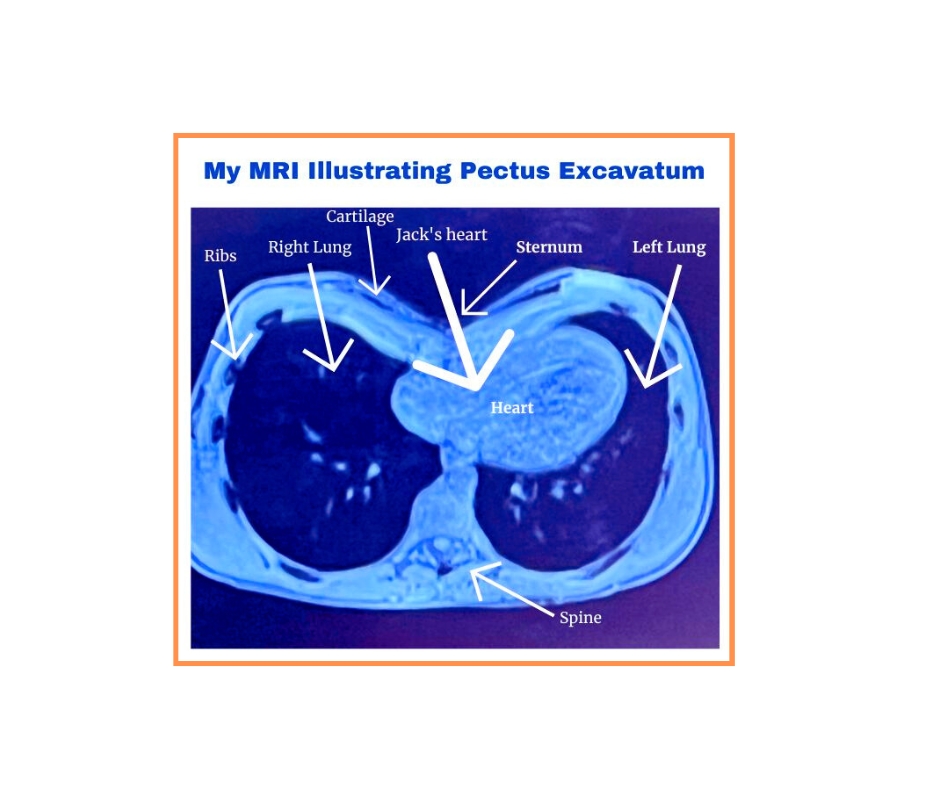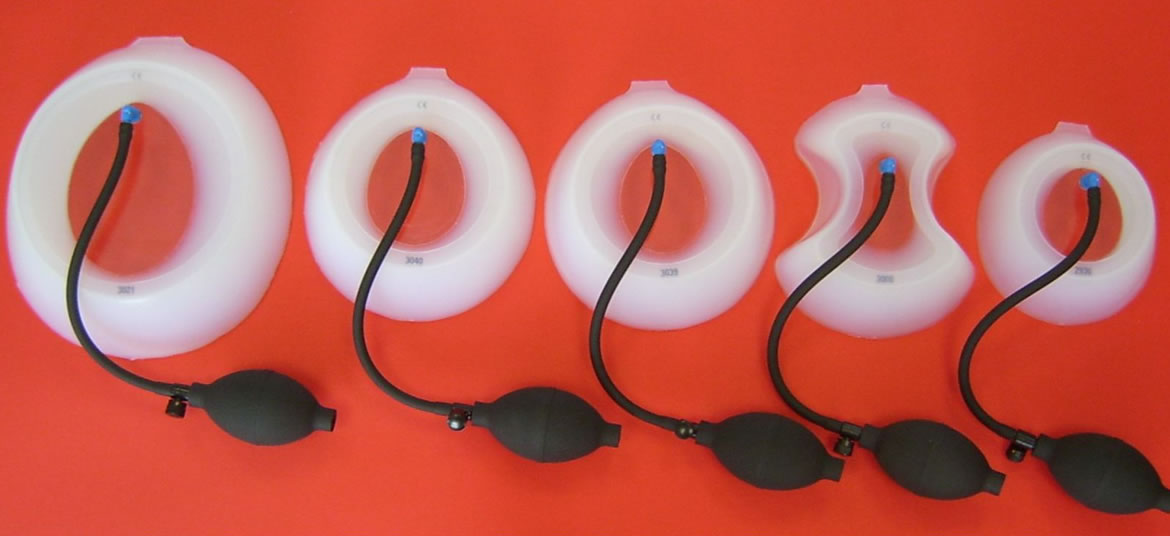
TREATMENT FOR PECTUS EXCAVATUM
You or your child have pectus excavatum. What do you do next? Where do you begin? Do you need to correct it? How do you find and choose a surgeon? There are varying degrees of pectus excavatum and non-surgical and surgical options to correct it. Although testing shows that you have pectus, treatment usually depends on its severity and if you are having symptoms.

Haller Index vs. Correction Index
In most cases, surgery is not necessary. As noted earlier, insurance companies will not usually cover a surgical procedure unless your Haller Index is >3.25. In addition to the Haller index, your radiology report will also include a correction index percentage. What is a correction index? The correction index is another measure that surgeons use to assess the severity of your deformity. The percentage is the amount your surgeon needs to correct your chest to normal, and an index greater than 10-28% is considered significant.10 If your Haller Index is >3.25, surgery can correct the physical deformity, and improve your symptoms such as breathing and cardiac function by lessening the pressure on the heart and lungs. A recent study in adults with normal cardiopulmonary exercise testing results before surgery showed that they still had significant improvements after having pectus repair.11
Here are the 3 main methods of correcting pectus excavatum. There is one non-surgical option and two surgical options:
- Vacuum Bell (non-surgical)
- Nuss Procedure (minimally invasive)
- Ravitch/modified Ravitch procedure (open procedure)

VACUUM BELL
Children under the age of 12 may not yet be a candidate for surgery. In many cases pectus will get worse as child goes through puberty. However, for younger patients (and some older patients) with mild pectus excavatum, you can try the non-surgical vacuum bell device.
The vacuum bell device was first developed in 2005 by Eckart Klobe in Germany. There are a few variations, but they all work the same way. It’s a non-surgical device with a round, rubber, cup-shaped suction device connected to a pump.12 When the suction piece is placed over the indented part of the chest, the pump sucks air out of the device creating a tight suction.
This suction will pull the chest and sternum forward, minimizing the indentation. The downside is that you must wear the vacuum bell for a minimum of 30 minutes twice a day to begin. When you are comfortable with that, you will gradually increase wear time to a total of 2 hours twice a day for 1-2 years. Many kids have trouble finding enough time to adequately wear the vacuum bell, however, there are a great many that have had a great result. When I first heard about the vacuum bell, I was excited at the possibility of avoiding surgery. However, at my first consultation I learned that my pectus was severe, and I was not a candidate for this device. You can read more about the vacuum bell and where you can purchase one under the vacuum bell menu tab.
NUSS PROCEDURE
The minimally invasive Nuss procedure is currently the most common surgical method for correcting pectus excavatum. The best thing about the Nuss procedure is that your chest will look completely normal immediately after surgery! The Nuss procedure or minimally invasive repair of pectus excavatum (MIRPE) has become the standard of care for most young patients.13 However, depending on the severity/type of your deformity, you may not be a candidate for this procedure. In some cases the Ravitch procedure may be a better option. Both the Ravitch and Nuss will improve the structure of the ribs and sternum, as well as the appearance of your chest.
Dr. Donald Nuss introduced the Nuss procedure in 1998 at the Children’s Hospital of The King’s Daughter’s in Norfolk, VA. However, there have been many advancements/changes to the original Nuss procedure, yet be aware that not all surgeons have adopted the newer and safer techniques. 14 Do your research before choosing a surgeon. My advise is don’t trust the first thoracic surgeon you see that tells you they “can do” the Nuss procedure. “In inexperienced hands, the Nuss procedure can have significant complications with bar displacement or cardiac injury.”15 For children/teens, the learning curve for surgeons performing the Nuss procedure is around 25 surgeries. This number will double for surgeons performing surgery on adults.16 It is also important to note that each surgeon has their own method of performing the Nuss procedure. I met with 4 different surgeons across the country, and none of them had the same technique.
What Should You Ask Your Surgeon?
Each surgeon I met with explained the Nuss procedure differently. So, it is important to ask the surgeon questions at each consultation to learn how they perform the surgery. You should also ask your surgeon about how they will manage your pain (see the FAQ tab). I had 5 consultations, and each surgeon told us something different. Here are some differences:
- Number of bars used
- Method of securing bars to ribs (stabilizer vs. fiberwire vs. a combination of both)
- Lifting of sternum before inserting bars
- Cryoablation vs. nerve block vs. opioid or other pain medication (or a combination of cryo and pain medication)

One, Two or Three Bars?
How many bars will you have inserted is an important question to ask your potential surgeon. The surgeons I met with had a difference of opinion as to how many bars they would use for my pectus. Why use more than one bar? The advantage of using multiple bars is to help distribute the pressure of the chest wall on the bars. This will also help lessen pain and discomfort, and give a better overall cosmetic result. My pectus was very wide and long, but had a very deep, central depression. I also had a lot of rib flare. Dr. Jaroszewski uses multiple bars in all of her surgeries, and she was the ONLY surgeon to recommend 3 bars to properly fix my pectus. Two surgeons we met with recommended only 1 bar, and the last two surgeons recommended 2 bars. Dr. J told me that to properly fix my pectus and get a perfect aesthetic repair, I needed more than 2 bars. Most surgeons will custom bend the bar(s) to best fit the patient, but I was happy to learn that Dr. J also uses shorter bars which will prevent any added discomfort when bending over or twisting. This was important to me since I play competitive tennis. I am also happy to report that my rib flare is around 90% corrected!
Stabilizers vs. Fiberwire
This is another important question to ask your surgeon when you have a consultation. How will they attach the bar(s) to your ribs and prevent them from moving or flipping? Some surgeons use a metal plate called a stabilizer to support the bar and keep it in place. One surgeon I met with explained that he usually uses one plate on both sides of the chest for all patients. Another surgeon told me that she tries to only use one stabilizer on one side to prevent discomfort.
Another method of securing the bar(s) is fiberwire. Two surgeons I met with said they try to use fiberwire whenever possible. Dr. Jaroszewski used fiberwire to attach my 3 bars, and mentioned that she will only use a stabilizer when necessary. If she does have to use a stabilizer, she will place it closer to the middle of the chest, and not at the end to avoid any extra discomfort. The majority of pectus patients are very thin, and if a stabilizer is used and placed at the end of the bar toward your side, it can be very uncomfortable (not to mention, also visible on the outside). Sometimes surgeons will opt to use both a plate and fiberwire in order to achieve the best possible outcome. There is no wrong way, and the main objective is to prevent the bar from flipping or shifting. However, I was hoping for the least painful option.
Will Your Surgeon Lift the Sternum Before Inserting Bars?
This is one question most families do not even think to ask, but it is super important. It was actually a dealbreaker for us, and one of the FIRST questions that we asked our surgeon. Why? When first diagnosed with pectus, my dad called our pediatrician to ask him if he knew any local pectus surgeons. Our pediatrician advised us not to seek surgery, because one of his patients had passed away after having the Nuss procedure. It happened at one of our local FL children’s hospitals after the surgeon accidentally punctured his heart. This surgeon did not lift the sternum prior to going in with the bar.
Of the 4 surgeons we consulted with, only 2 used a Rultract Retractor. The purpose of the retractor is to lift the sternum prior to inserting the bar(s) under the sternum. The retractor allows your surgeon to see your heart and lungs more clearly, and safely guide the bar across your chest.

How Does Your Surgeon Manage Pain?
Once I decided that I wanted to have surgery, the one thing that scared me was pain. Everything I read on the Internet mentioned that the Nuss procedure was very painful. All of the surgeons I met with told me that the pain was the worst part of the surgery. So, one of my first questions to the surgeons was how do they manage pain? My parents also had the same question, and this topic made them very nervous. My parents were very opposed to me taking opioids, and wanted a surgeon who had other solutions. Luckily, there have been MANY advancements made to pain management protocols for the Nuss procedure. The introduction of cryoablation for pain management has been a total game changer in preventing pain. However, my family quickly learned that not all surgeons are skilled in this technique, so they do not offer it.
You must question your surgeon about how they will manage your pain. We found that pain management after pectus repair still differs among pectus surgeons. For example, one surgeon we met with used a nerve block injection called Exparel intraoperatively for pain. Two surgeons recommended using cryoablation to help with postoperative pain, while one surgeon only used oral opioids, muscle relaxers, Tylenol,and Motrin for pain control.
One of the many reasons I chose to have my surgery with Dr. Jaroszewski is that she was very experienced and confident using cryoablation. She explained that with cryo, I would not experience any severe pain and that there would be little to no need for opioids. She even stated that if my insurance denied the cryoablation fee, she would not charge us for it. I know everyone experiences pain differently, but I was actually feeling well enough to go out to a restaurant by day 5 after surgery.
How Is the Nuss Procedure Performed?
Before explaining more about the Nuss procedure, it is important to know that EVERY surgeon we consulted with performed this minimally invasive procedure differently. It is extremely important that you ask questions at each consultation and I suggest writing down your questions ahead of time. The following description of the Nuss procedure is based upon my own surgery experience with Dr. Dawn Jaroszewski. However, there are many other surgeons who also perform the surgery using this same technique.
During the Nuss procedure, your surgeon will make two small incisions on both sides of your chest (you can see my incisions in my after photos under the Before/After tab). A tiny camera called an endoscope is first inserted so your surgeon can get a better view of your organs inside of your chest. Then, depending on the severity/location of your pectus, 1, 2 or 3 curved stainless steel or titanium bars are inserted underneath your sternum.
Credits: Medialab at Cincinnati Children’s Animation: Jeff Cimprich and Ren Wilkey Medialab Direction and additional content expertise: Ken Tegtmeyer, MD Content Experts: Rebeccah Brown, MD and Victor Garcia, MD
